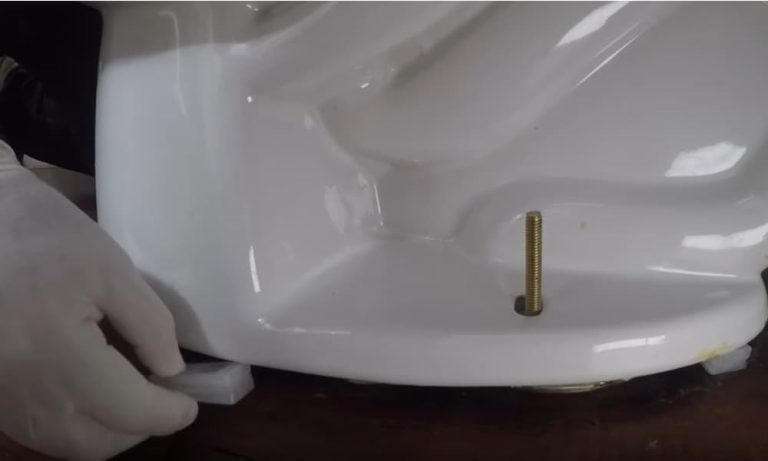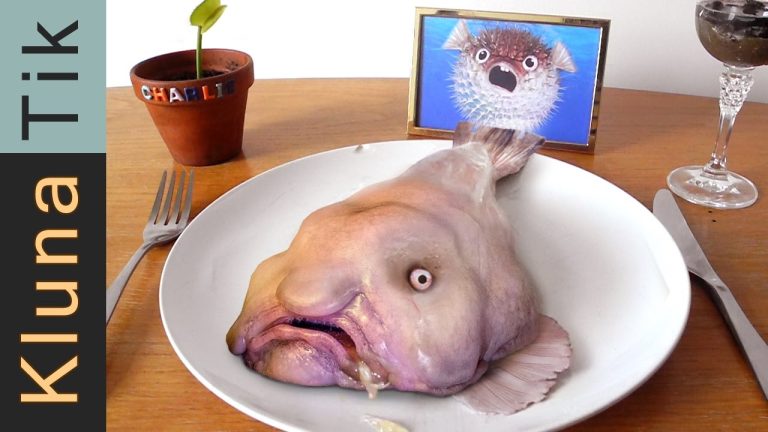What Do Dog Worms Look Like
Dogs can get various types of worms, and each type looks different. The most common types of worms are roundworms, tapeworms, and hookworms. Each worm has a distinct shape and size.
Roundworms are the largest type of worm and can grow up to 7 inches in length. They’re white or light-colored and have a smooth, cylindrical shape. Tapeworms are much smaller, only growing to be about 2/3 inch long.
They’re flat and segmented, with a head that’s equipped with hooks or suckers that help them attach to the dog’s intestine. Hookworms are thin and small, only growing to be about 1/8 inch long. They have sharp teeth that they use to latch onto the intestine wall.
4 Common Types of Worms in Dog Poop
If you’re a pet owner, then it’s important to know what to look for when it comes to dog worms. While there are many different types of worms that can infect dogs, they all have one thing in common: they’re tiny and hard to spot with the naked eye. Here’s a quick guide on what to look for when checking your dog for worms.
Roundworms are the most common type of worm found in dogs, and they look exactly like their name suggests: round and white, about the size of a strand of spaghetti. If you notice your dog has diarrhea or is vomiting more than usual, it could be a sign that they have roundworms.
Tapeworms are another common type of worm found in dogs.
They’re flat and segmented, and can range in length from just a few inches to several feet long! Tapeworms are usually contracted by dogs who eat infected fleas or rodents. If you see small, white segments in your dog’s feces, it’s likely tapeworms.
Hookworms are yet another type of worm that can infect dogs. These parasites attach themselves to the lining of the intestines and feed off of blood. Hookworms can cause anemia in severe cases, so if you notice your dog is tired or lethargic, it could be a sign that they have hookworms.
Identifying Dog Worms
There are many types of dog worms, but the most common are roundworms, hookworms, and tapeworms. Each type of worm has a different life cycle and affects dogs differently.
Roundworms are the most common type of dog worm.
They’re acquired when puppies nurse from their mother or drink contaminated water. Adult roundworms can also infect dogs, though this is less common. Roundworms cause abdominal pain and diarrhea in dogs.
In severe cases, they can lead to weight loss and death.
Hookworms are another type of dog worm that’s acquired through contaminated water or soil. Puppies can also get hookworms from their mother’s milk.
Hookworms attach to the lining of the intestine and feed on blood. This causes anemia and weight loss in dogs. Hookworms can also cause death in young puppies if left untreated.
Tapeworms are usually acquired when dogs eat infected fleas or rodents. Tapeworms grow in the small intestine and absorb nutrients from food as it passes through. Tapeworms don’t typically cause serious illness in dogs, but they can lead to malnutrition if left unchecked.
Dog Worms in Poop
If your dog has worms in its poop, it’s important to get rid of them as soon as possible. Not only are they gross, but they can also make your dog sick. Here’s what you need to know about dog worms in poop.
There are two main types of worms that can infect dogs: roundworms and tapeworms. Both types of worms live in the intestines and feed off of the food that your dog eats. As they grow, they shed their eggs which are then passed out in the poop.
If another animal (including humans) ingests these eggs, they can become infected with the worm larvae.
Roundworms are the most common type of worm found in dogs. They’re white or light-colored and look like spaghetti noodles.
Tapeworms, on the other hand, are flat and segmented. You may be able to see them in your dog’s poop if they’re particularly long (up to 12 inches!).
Symptoms of Worms in Dogs
Dogs with worms typically have a poor appetite, weight loss, and a potbelly due to the parasites taking up space in their intestines. They may also vomit or have diarrhea (which may contain blood or mucus). In severe cases, anemia and death can occur if left untreated.
Treating Worms in Dogs
Fortunately, there are many effective treatments for both roundworms and tapeworms available from your veterinarian. The type of treatment will depend on the type of worm present as well as the severity of infection.
In most cases, oral medication will be sufficient to kill the parasites and clear them from your dog’s system within a few days time.
How Do Dogs Get Worms
There are a few different ways that dogs can get worms. The most common way is through contact with infected feces, either directly or indirectly. This can happen if your dog eats something that has been contaminated with worm eggs, or if they come into contact with an infected animal.
Dogs can also get worms by drinking contaminated water, or from mosquito bites.
Symptoms of worms in dogs can vary depending on the type of worm involved, but may include weight loss, diarrhea, vomiting, and a poor coat condition. If you think your dog may have worms, it’s important to take them to the vet for a diagnosis and treatment plan.
Signs of Worms in Dogs Poop
If you think your dog may have worms, there are some signs to look for in their poop. The most common sign of worms in dogs is seeing them in your dog’s feces. However, not all types of worms are visible to the naked eye.
Another sign that your dog may have worms is if they’re losing weight or their appetite despite eating the same amount of food. If you notice any of these signs, it’s important to take your dog to the vet for a checkup and diagnosis.
How Long Can a Dog Have Worms before It Dies
No one wants to think about their dog having worms, but it’s an unfortunate reality for many pet owners. While most types of worms are not deadly, they can cause serious health problems for your furry friend if left untreated. So, how long can a dog have worms before it dies?
There is no definitive answer to this question as it depends on a number of factors, including the type of worm your dog has, the severity of the infestation, and your dog’s overall health. However, in general, if left untreated, worms can eventually lead to organ damage and failure, which can be fatal.
If you suspect that your dog has worms, it’s important to take them to the vet for treatment as soon as possible.
In most cases, worming medication will kill the parasites and clear up the infection within a few weeks. However, some dogs may require more aggressive treatment if they have a heavy infestation or are immunocompromised.
No one wants to think about their beloved pet suffering from a worm infestation, but it’s important to be aware of the risks.
If you think your dog may have worms, don’t delay in getting them seen by a veterinarian.
Small White Worms in Dog Poop
If you notice small white worms in your dog’s poop, it’s likely that they’re roundworms. Roundworms are one of the most common types of parasites found in dogs, and they’re usually transmitted through contaminated food or water. While they’re not typically harmful to dogs, they can cause problems if left untreated.
If you think your dog may have roundworms, take them to the vet for a diagnosis and treatment plan.
What are the Chances of Getting Worms from Your Dog
There are a few different types of worms that your dog can get, and the chances of you getting them from your dog depend on the type of worm. The most common type of worm is the roundworm, and the chances of you getting this type of worm from your dog are pretty low. If your dog has roundworms, they will likely show signs such as vomiting, weight loss, or a pot-bellied appearance.
If you think your dog may have roundworms, take them to the vet to be sure and to get treatment.
Tapeworms are another type of worm that your dog can get, and these are actually more easily transmitted to humans than roundworms. If your dog has tapeworms, they may have segments of the worm in their stool (which look like grains of rice).
You can become infected with tapeworms if you eat food or drink water that has been contaminated with them, or if you come into contact with contaminated soil. Symptoms in humans include abdominal pain, diarrhea, nausea, and weight loss. If you think you may have tapeworms, see a doctor right away for diagnosis and treatment.
There are other less common types of worms that dogs can get as well, such as hookworms and heartworms. These worms are less likely to be transmitted to humans; however it is still possible so it’s important to practice good hygiene (such as washing your hands after coming into contact with your dog) and taking your pet to the vet regularly for check-ups and worming treatments.
Dead Worms in Dog Poop
No one likes to see worms in their dog’s poop, but unfortunately it’s a common occurrence. There are a variety of different types of worms that can infect dogs, and they range in severity from being a nuisance to potentially deadly. The most common type of worm is the roundworm, which is usually transmitted through contaminated soil.
These worms can grow up to seven inches long and look like spaghetti noodles in your dog’s poop. If left untreated, roundworms can cause malnutrition and organ damage in dogs. Another common type of worm is the hookworm, which is also transmitted through contaminated soil.
Hookworms are much smaller than roundworms, but they can cause severe anemia in dogs if left untreated. Treatment for both types of worms is typically done with oral medication prescribed by your vet.
If you see dead worms in your dog’s poop, it’s likely that they were already present before you started treatment.
Dead worms are not a cause for concern and do not indicate that the treatment isn’t working. In fact, seeing dead worms in your dog’s stool is actually a good sign that the medication is doing its job!

Credit: www.petbasics.com
How Can I Tell If My Dog Has Worms?
There are a few ways to tell if your dog has worms. The most common signs are weight loss, poor coat condition, and diarrhea. If your dog is exhibiting any of these symptoms, it’s important to take them to the vet for a checkup.
Another way to tell if your dog has worms is by looking at their feces. If you see small, white worms in their stool, this is a sign of roundworms. If you see long, thin worms that look like spaghetti, this is a sign of tapeworms.
Again, if you notice any of these things, it’s best to take your dog to the vet right away for treatment.
What Does Worms Look Like in Dog Poop?
There are many types of worms that can infect dogs, and they can vary in size, shape and color. Some common types of worms include roundworms, hookworms, tapeworms and whipworms.
Worms often look like small pieces of string or rice in dog poop.
They may be white, tan or brown in color, and can range in length from a few millimeters to several centimeters. In some cases, you may be able to see the worm moving around in the stool.
If you think your dog has worms, it’s important to take them to the vet for diagnosis and treatment.
Worms can make dogs very sick if left untreated, so don’t delay in seeking veterinary care if you suspect your dog has worms.
What Color are Dog Worms?
There are many different types of dog worms, and each type is a different color. The most common type of worm is the roundworm, which is white or light-colored. Other common types of worms include the hookworm (which is red or brown), the tapeworm (which is white), and the heartworm (which is red).
Can Humans Get Worms from Dogs?
While it is possible for humans to get worms from dogs, it is not common. The most common type of worm that can be transmitted from dogs to humans is the roundworm. Roundworms are typically found in dog feces and can enter the human body through contact with contaminated soil or objects.
In rare cases, they may also be transmitted through contact with an infected dog. Symptoms in humans include coughing, wheezing, abdominal pain, and diarrhea. Treatment is typically with a course of antibiotics.
How Do You Get Rid of Dog Worms?
There are a few different types of worms that can infect dogs, so the best way to get rid of them is to consult with your veterinarian. They will be able to prescribe the appropriate treatment based on the type of worm your dog has. In general, though, the most common method of treatment is deworming medication, which will kill the worms in your dog’s system.
Whats Dog Worms Look Like?
There are a few different types of worms that can infect dogs, and they can vary somewhat in appearance. The most common type of worm is the roundworm, which looks like a long, white thread-like creature. If you suspect your dog has roundworms, you may be able to see them in his stool or vomit.
Another type of worm is the hookworm, which is much smaller than the roundworm and can be difficult to see without a microscope. Hookworms attach themselves to the lining of the intestine and feed off blood, so if your dog has them he may appear anemic. Tapeworms are yet another type that can infest dogs.
They look like flat, white segments and may be visible in your dog’s stool or clinging to his fur around his hind end.
If you think your dog has worms, it’s important to take him to the vet for diagnosis and treatment. Some types of worms can be passed to humans, so it’s also important to practice good hygiene (such as washing your hands after handling your pet) if you think he has them.
Conclusion
There are many types of dog worms, but the most common are roundworms and tapeworms. Roundworms look like thin, white spaghetti noodles and can grow up to 7 inches long. Tapeworms are flat, segmented worms that can get up to 4 feet long.
Both types of worms live in the intestines and feed off of the food your dog eats. They can cause severe weight loss, diarrhea, vomiting, and even death if left untreated.




